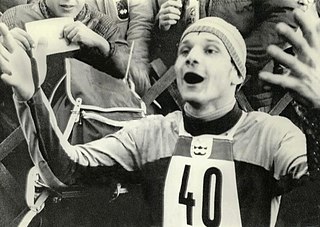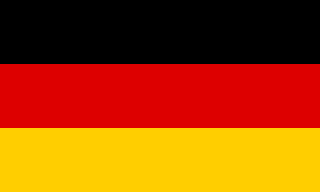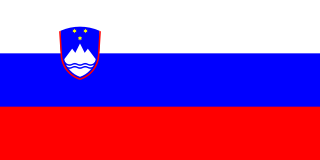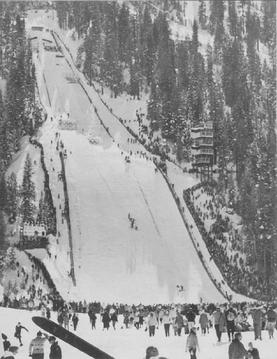Related Research Articles

The 1994 Winter Olympics, officially known as the XVII Olympic Winter Games and commonly known as Lillehammer '94, were an international winter multi-sport event held from 12 to 27 February 1994 in and around Lillehammer, Norway. Having lost the bid for the 1992 Winter Olympics to Albertville in France, Lillehammer was awarded the 1994 Winter Games on 15 September 1988, two days before the 1988 Summer Olympics opening ceremonies at the 94th IOC Session in Seoul, South Korea. Due to the calendar changes made in 1986, this was the only time that the Winter Olympics took place two years after the previous Winter Games, and the first to be held in a different year from the Summer Olympics. This was also the first Winter Olympics to be held during the Commonwealth Games and FIFA World Cup year. This was the second Olympic Games of any type hosted in Norway — the first being the 1952 Winter Olympics in Oslo — and the fourth Olympics overall to be held in a Nordic country, after the 1912 Summer Olympics in Stockholm, Sweden, and the 1952 Summer Olympics in Helsinki, Finland. Lillehammer is the northernmost city ever to host the Olympic Games.

The 1960 Winter Olympics were a winter multi-sport event held from February 18 to 28, 1960, at the Squaw Valley Resort in Squaw Valley, California, United States. The resort was chosen to host the Games at the 1956 meeting of the International Olympic Committee (IOC). Squaw Valley was an undeveloped resort in 1955, so the infrastructure and all of the venues were built between 1956 and 1960 at a cost of US$80,000,000. The layout was designed to be intimate, allowing spectators and competitors to reach most of the venues on foot.

Norway competed at the 2002 Winter Olympics in Salt Lake City, United States. The nation enjoyed its best ever results in gold medals, most notably in the biathlon events, when Ole Einar Bjørndalen swept all four gold medals.

Georg Thoma is a retired German Nordic combined skier and ski jumper. He won a gold medal at the 1960 Olympics, becoming the first non-Scandinavian athlete to do so, and was voted German Sportsman of the Year. At the 1964 Olympics he won a bronze medal and served as the Olympic flag bearer for Germany at the opening ceremony. He further won the world championships title in 1966. Thoma's strength in the Nordic combined was jumping. He was three times German champion in ski jumping. Additionally, he won the Nordic combined at the Holmenkollen ski festival from 1963 to 1966. For his Nordic combined successes, Thoma was awarded the Holmenkollen medal in 1964.

Armin Kogler is an Austrian former ski jumper.

Hans-Georg Aschenbach is a former East German ski jumper.

Veikko Kankkonen is a retired Finnish ski jumper who competed at the 1960, 1964 and 1968 Winter Olympics. He won two medals in 1964 with a gold in the individual normal hill and a silver in the individual large hill event. That same year he won the jumping competition at the Holmenkollen ski festival, which also earned him the Holmenkollen medal. He also won the Four Hills Tournament and served as the flag bearer for Finland at the 1968 Olympics.
Halvor Næs was a Norwegian ski jumper who competed in the 1950s. His only victory was in 1953 and he finished fifth in the individual large hill event at the 1952 Winter Olympics in Oslo. He was born in Trysil. Næs was awarded the Holmenkollen medal in 1964. Næs died in Trysil on 13 October 2022, at the age of 94.

Norway competed at the 1968 Winter Olympics in Grenoble, France.

West Germany competed at the Winter Olympic Games for the last time as a separate nation at the 1988 Winter Olympics in Calgary, Alberta, Canada. Following German reunification in 1990, a single German team would compete in the 1992 Winter Olympics.

West Germany competed at the 1972 Winter Olympics in Sapporo, Japan.

Germany competed at the 1952 Winter Olympics in Oslo, Norway after not having been invited to the 1948 Winter Olympics because of their role in World War II, and because the NOC restored in 1947 as Deutscher Olympischer Ausschuß did not represent a recognized state yet. The Federal Republic of Germany was founded in 1949, the NOC for Germany was renamed and in 1951 recognized by the IOC while recognition of a separate National Olympic Committee of the GDR was declined. East Germans were told to cooperate and form a united German team, which they declined in 1952, but accepted for 1956 and later.

Germany competed at the 1992 Winter Olympics in Albertville, France. It was the first time that the nation had competed at the Olympic Games following reunification in 1990 and for the first time as a single nation since 1936. Previously, West Germany and East Germany had sent independent teams to the Games.

Finland first participated at the Olympic Games in 1908 and has sent athletes to compete in every Summer Olympic Games and every Winter Olympic Games since then. Finland was also the host nation for the 1952 Summer Olympics in Helsinki. Finnish athletes have won a total of 305 medals at the Summer Games, mostly in athletics and wrestling. Finland has also won 175 medals at the Winter Games, mostly in nordic skiing events.

Schonach im Schwarzwald is a town in the district of Schwarzwald-Baar in Baden-Württemberg in Germany.

Slovenia first participated as an independent nation at the Olympic Games at the 1992 Winter Olympics in Albertville, France, and the country has sent athletes to compete at every Games since then. The Slovenian Olympic Committee was established in 1991 and was recognised by the International Olympic Committee on 5 February 1992.

Georg Streitberger is a retired World Cup alpine ski racer from Austria. Born in Zell am See, Salzburg, he specialized in the speed events and won three World Cup races, two in super G and one in downhill.

Papoose Peak Jumps was a ski jumping hill at Palisades Tahoe in the US state of California. The hill had three jumps with K-points of 80, 60 and 40 meters respectively. It was built on the hillside of Little Papoose Peak for the 1960 Winter Olympics; the 80-meter hill hosted the ski jumping event and the 60-meter hill the Nordic combined event. The jump was designed by Heini Klopfer and opened in 1958. After the Olympics the venue had very little use; it was renovated for the 1976 US National Ski Jumping Championships, but falling into disrepair it was demolished to make room for the Far East Express ski lift.
References
- ↑ Evans, Hilary; Gjerde, Arild; Heijmans, Jeroen; Mallon, Bill; et al. "Georg Waldvogel Olympic Results". Olympics at Sports-Reference.com. Sports Reference LLC. Archived from the original on 18 April 2020. Retrieved 29 August 2019.